Hawaii is home to a unique and diverse range of mushrooms, some of which are found nowhere else on the planet. Its varied climate and unique wildlife provide the perfect conditions for an abundance of mushroom species to thrive.
From their distinctive cap shapes and sizes to their wide range of colors, these mushrooms have been captivating locals and visitors alike for years. Below we’ll discuss common mushrooms in Hawaii, so if you are looking to visit the big island, read on.
List of Edible Mushrooms of Hawaii Islands
You must practice caution when hunting mushrooms. Only harvest fungi that you can properly identify or better hunt in the company of an experienced forager
1. Giant Puffball
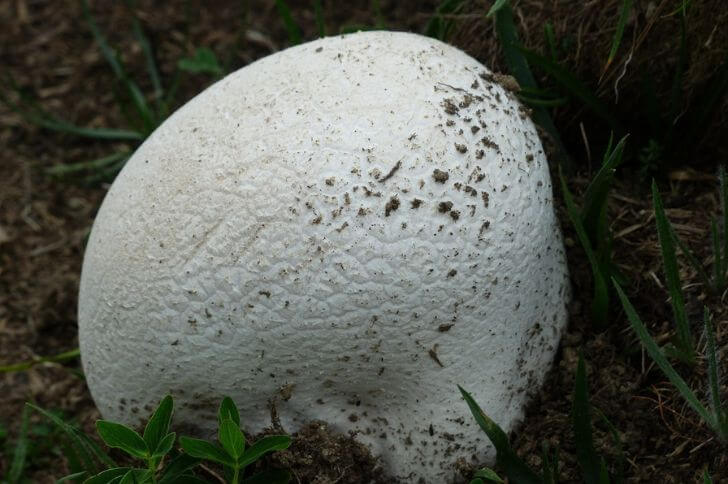
Calvatia gigantea, you may know it as the giant puffball, is a species of fungi that occurs in Hawaii.
Identification:
The fruit bodies of these fungi mature a few weeks after they pop out and can reach up to 20-25 inches diameter. Although they are typically white or off-white in color, they may also be yellowish, brown, or tan.
These fungi are saprobic, meaning that they obtain their nutrients by breaking down dead organic matter.
They can often be found growing on lawns, in woodlands, or in fields. When can you find giant puffballs in Hawaiian islands? Mostly these large mushrooms will pop out after some good rain.
If you are looking to hunt for this mushroom, we recommend you go for younger puffballs. Their flesh should be solid white. They don’t have a distinctive taste.
2. Button Mushrooms
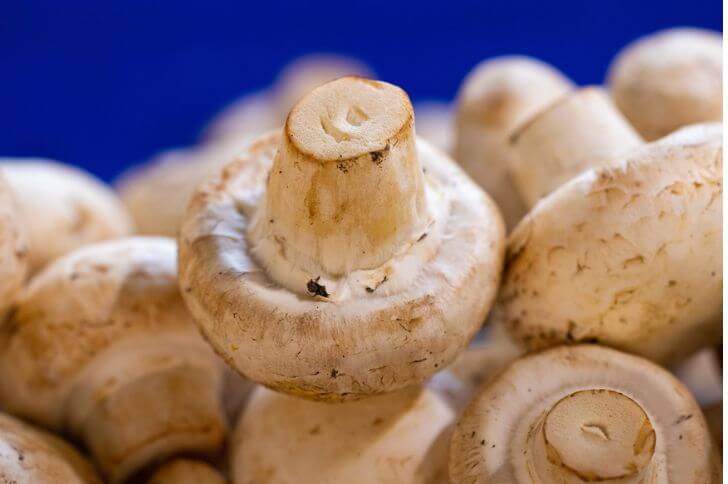
Agaricus bisporus, also known as the common white mushroom or button mushroom, is a widely cultivated edible mushroom. It is native to Hawaii.
Identification:
The fruit bodies are white, have a short stem, and a small cap with gills on the undersurface. The convex cap is about 2-4 inches and stands at about 2.5 inches tall.
Button mushroom is an important commercial mushroom and is cultivated in Hawaii. It is easy to grow and is popular for its versatility in cooking. It can be used fresh or canned and is a common ingredient in soups, stews, casseroles, and other dishes.
3. Pepeiao mushrooms (Cloud ear)
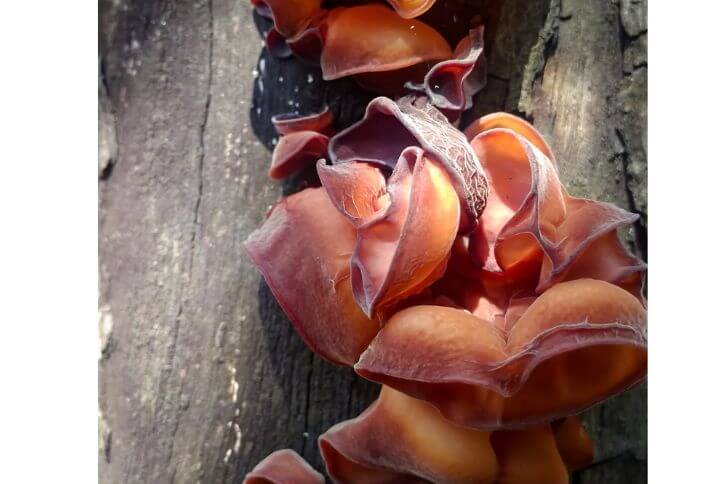
Pepeaiao mushrooms is a fungi with many names. You may know it as cloud ear, wood ear, tree ear fungus or bok nee in Asia. In Hawaii it is commonly known as pepeiao.
Identification:
Cloud ear mushrooms grow in clusters or in solitary. Their fruiting body ranges from reddish-brown to pale brown. Their cap is hairy but soft under the surface.
These mushrooms grow in moist environments such as decaying logs or dead trees. Cloud ear mushrooms appear in many recipes, including soups, salads, stir-fries and more. What do they taste like? Pepeiao mushrooms have a crunchy texture and a mild taste.
4. Reishi Mushrooms
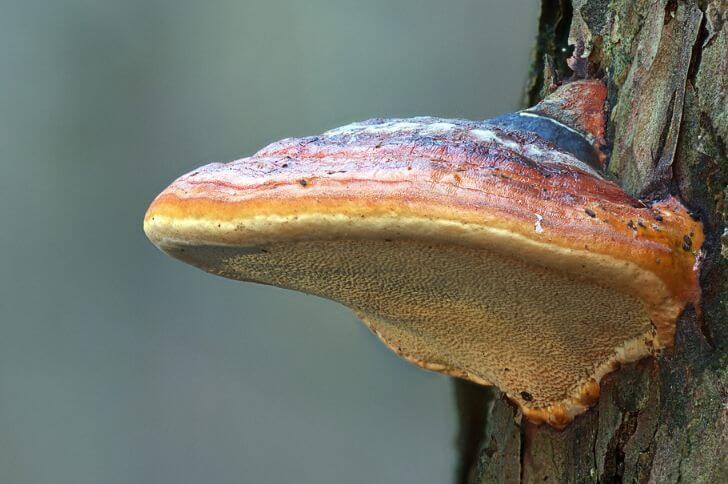
Are there reishi mushrooms in Hawaii? Yes, this bracket fungus can be found in the main islands; Maui and Kauai.
Identification:
Lingzhi or the mushroom of immortality typically grows up to 5 ft but the Hawaiian variety is smaller in size. Also in the big island there are two varieties; one that appears annually while the other grows perennials. Annuals are smaller than perennials.
5. Snow Fungus
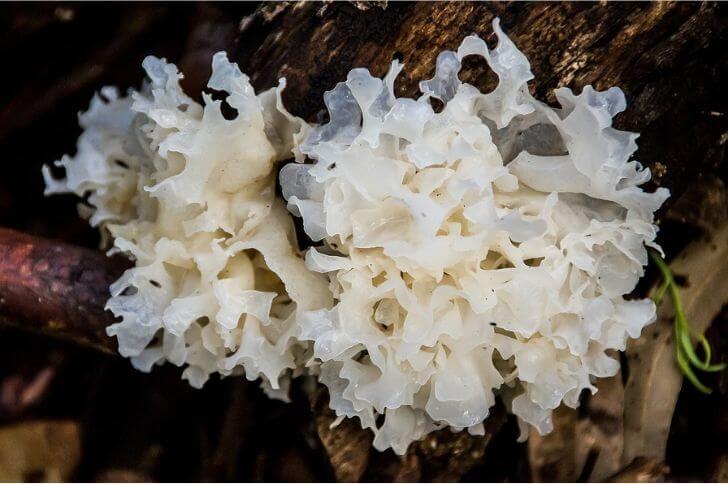
One of the most common and easily recognizable Tremella species is Tremella fuciformis or snow fungus, which can be found on dead branches of broadleaf trees. It is also known as white jelly mushrooms, silver ear fungus, or white cloud ear.
Identification:
The gelatinous, yellow-to-white fruiting bodies look like jellyfish, giving them their name. Snow fungi are edible and are mostly found in local stores in their dried form. They are loved for their sweet taste. Also, in parts of Asia, this fungus is used to make beauty products.
6. Maple Oyster Mushrooms in Hawaii Island

Hawaii has the perfect weather for mushroom cultivation. The Maple oyster or the abalone mushroom is a widely cultivated mushroom.
Identification:
The fruit bodies have fan-shaped caps with a diameter of 2-4 inches. The gills are attached to the stem, and white to pale yellow in color. The stem is up to 2 inches long and white or pale yellow in color. Its white flesh has a mild flavor.
7. Wood Blewit
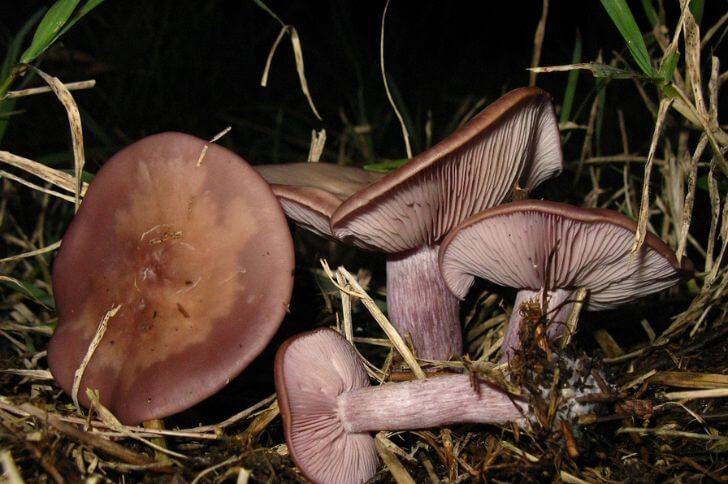
Another edible mushroom in Hawaii is the lepista nuda or clitocybe nuda or wood blewit.
Identification:
Wood blewits have a distinct taste but lack the strong orange fruit smell that blewits are known for. These mushrooms grow best in moist deciduous forests, such as oak or beech trees. They are often found growing on the ground in clusters or singly near stumps or logs.
Wood blewits have a purple cap that ranges from 2 to 6 inches in diameter and smooth, convex surface. Note the crowded gills under the large cap. These mushrooms are found in Hawaii from late fall.
Related Read: Learn about different long mushrooms
8. Poplar Mushroom
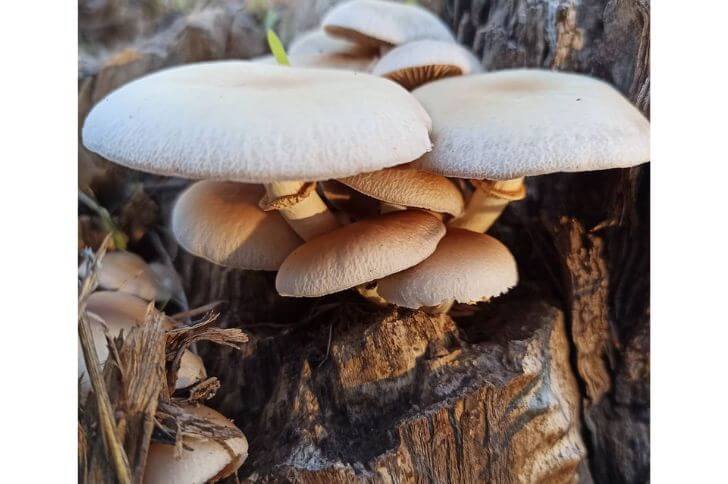
Poplar mushrooms are some of the rarest fungi of Hawaii. They are called Tawaka or Agrocybe parasitica.
Identification:
The fruit bodies of this Hawaiian fungus are small, buff-colored with conical caps and stipes that are equal in length or slightly longer than the cap diameter. This species has been recorded growing on hardwood trees.
This mushroom is loved for its meaty taste; you can use it instead of meat.
9. Fan-Shaped Jelly Fungus
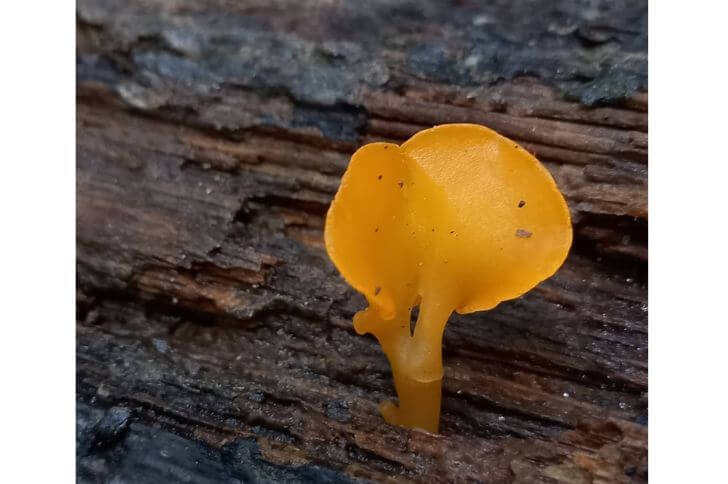
Dacryopinax spathularia or the fan-shaped jelly fungus is a species of fungi in the family dacryomycetacaea.
Identification:
The fruit bodies of this fungus are characterized by their spoon-shaped structures which can grow up to 1-inch in length. They are orange to yellow with a tough-gelatinous outer. They typically grow on rotting coniferous trees and have many commercial uses. They can be used to preserve soft drinks. These small mushrooms of Hawaii are edible.
10. Cinnabar Polypore
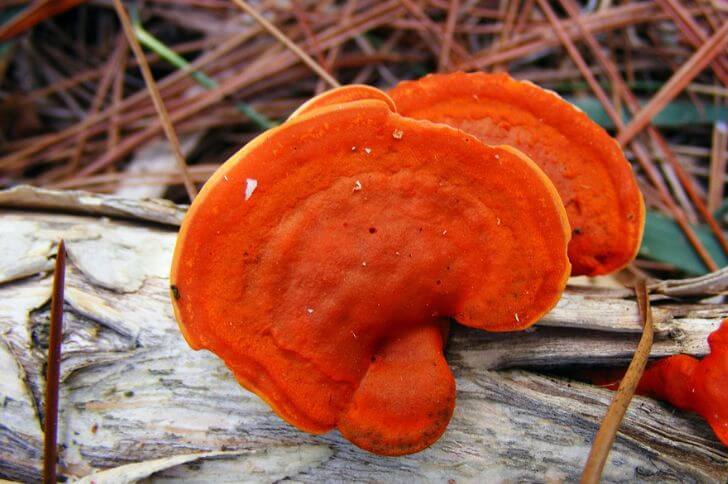
Pycnoporus cinnabarinus, commonly called the Cinnabar Polypore, is a species of fungus belonging to the family Polyporaceae.
Identification:
This colorful and captivating mushroom is native to many parts of the big island. It grows mostly on dead or living hardwoods like oaks, elms and birches.
The distinctive appearance of this mushroom makes it easy to identify. It has a bright red-orange cap.
While the fruiting bodies are often quite small, they can grow up to 6 inches across when mature. The texture can vary from soft and leathery when young to hard and brittle when older. They are perfect for making tea or dyes.
11. Yellow Morels
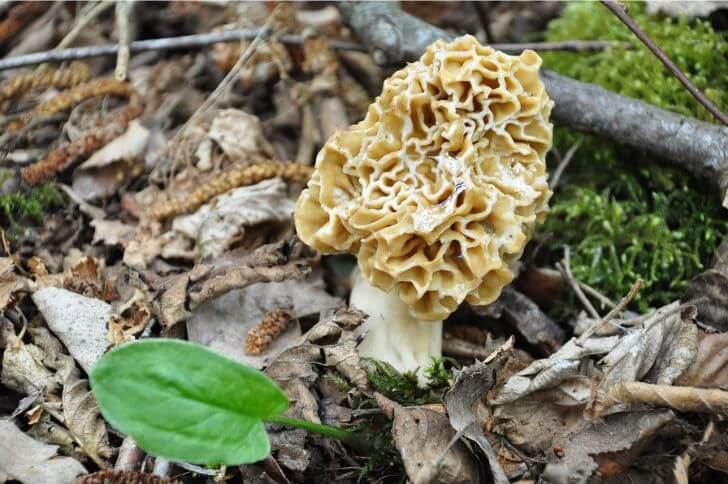
Morchella esculenta, also known as the yellow morel or true morel, is a species of edible fungus in the Morchellaceae family.
Identification:
The fruit bodies have a distinctive conical cap with ridges or pits, and a hollow stem. They are found in deciduous woods.
The yellow morel is a sought-after Hawaiian fungi by chefs and home cooks alike due to its unique flavor and texture. These mushrooms are often sauteed or used in cream sauces, soups, and risottos. You can also serve them with roasted vegetables.
List of Inedible Hawaiian Mushrooms
12. Starfish Fungi
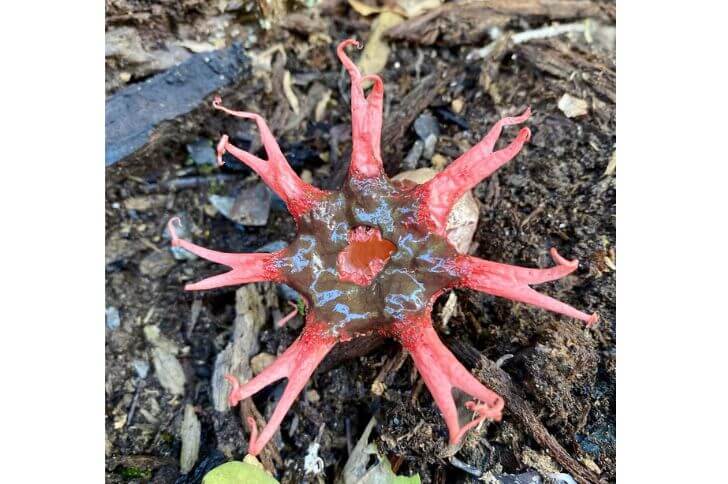
Now to one of the most common Hawaiian mushrooms; the starfish fungi. Also known as anemone fungi, aseroe rubra, or anemone stinkhorn, the first thing that’ll attract you to it is its unique color.
Identification:
The fruit body of the fungus is not only stunning but also boldly colored. It starts out as a whitish egg, about 1.5-inch in diameter. Eggs found around decaying leaf litter, which they feed on.
Within a week or two, a pinkish mushroom emerges from the egg. As the mushrooms matures, it turns red with 6-10 arms which can grow to 2 inches. The arms give it a star shape, giving this mushroom its name. Note the brownish spore print.
Now, before you move close to this mushroom there is something you need to know about this species, they are also called stinkhorn because they stink. They have a strong rotting flesh odor that’ll put off most people.
13. Fly Agaric
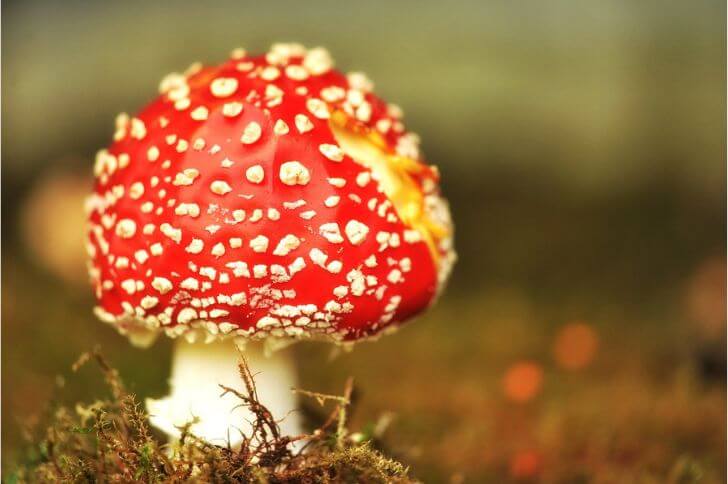
Amanita muscaria is a species of red fungus that can be found in summer throughout Hawaii.
Identification:
The mushroom has a distinctive red cap with white spots. On its underside you’ll note white, well-spaced gills. Its flesh is white. Is this red fungus edible? No, if you are not part of a mycological society and are not knowledgeable about mushrooms, avoid any red-colored fungi.
FAQs
What type of mushrooms grow in Hawaii?
The most common types of mushrooms you will find in Hawaii include oyster mushrooms, yellow morels, reishi and wood blewits.
These edible varieties are often used as ingredients in dishes served at local restaurants or harvested by savvy hunters looking for a delicious treat while out on their hikes. Other non-edible species such as fly agarics may also be found.
Do wild mushrooms grow in Hawaii?
The diverse and wet climate of the Hawaiian islands makes it an ideal environment for a variety of mushroom species to thrive.
The most common types of mushrooms to be found are Chanterelles, Oysters, King Trumpets, Shaggy Manes, Puffballs, Slime Molds and Sulfur Shelf Fungi.
Can you forage for mushrooms in Hawai’i?
Foraging for mushrooms in Hawaii is a unique and exciting experience. From the lush forests to the green pastures, this tropical paradise is dotted with many different types of fungi.
It’s possible for anyone to safely discover, identify, and harvest these edible mushrooms for their own culinary use.
Before embarking on a mushroom-foraging journey in Hawaii though, it’s important to understand the local laws and regulations that govern harvesting wild fungi.
It’s also essential to learn all the necessary safety tips when identifying and picking wild mushrooms, so there are no unpleasant surprises later on down the road.
With enough knowledge and care taken while gathering these delicious treasures of nature, anyone can enjoy an enlightening foray into Hawaii’s remarkable array of wild fungi!
Sources:
Hi There,
My name is Jenny. I’m the Chief Editor at Try Green Recipes and besides making yummy and healthy foods for my kids, grandkids, and friends. I’m new to the blogging world but I believe what I have to share is unique and will bring joy to your home. If you are adventurous and want try something tasty, let’s get started.

